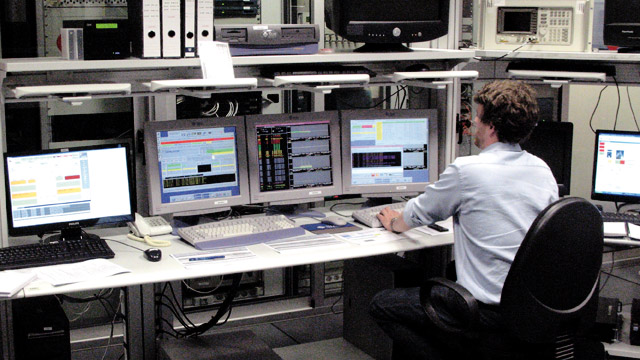Elements and applications
The satellites in the system communicate on the X band, which is available only for governmental and military communications. This makes it impossible for other parties to intercept or interfere with the transmissions. The command and control of the satellites is carried out using an encrypted system that provides a high level of security. The system’s reliability is further enhanced through redundant control stations in secure areas.
All of Hisdesat’s transponders are also fully compatible with the infrastructure in place in the USA, NATO and Europe for ground-based X-band terminals.
The system allows for fixed and mobile voice, data and video communications. It can work in broadband with small “comms on the move” terminals such as manpacks, small vessels, aircraft, including drones (UAV), submarines, etc.
It also facilitates network-centric applications, broadcasting using the DVB-RCS2 standard, communications for IP networks (EOIP), high-quality videoconferencing, broadband internet access and more.
In short, the system will feature greater flexibility and address the changing needs of governmental and military communications by incorporating important new technologies, like the large number of mobile beams and their interconnectivity. It is compatible with all current X-band ground-based terminals, meaning it can be used by the systems of allied nations.

Elements and applications
The satellites in the system communicate on the X band, which is available only for governmental and military communications. This makes it impossible for other parties to intercept or interfere with the transmissions. The command and control of the satellites is carried out using an encrypted system that provides a high level of security. The system’s reliability is further enhanced through redundant control stations in secure areas.
All of Hisdesat’s transponders are also fully compatible with the infrastructure in place in the USA, NATO and Europe for ground-based X-band terminals.
The system allows for fixed and mobile voice, data and video communications. It can work in broadband with small “comms on the move” terminals such as manpacks, small vessels, aircraft, including drones (UAV), submarines, etc.
It also facilitates network-centric applications, broadcasting using the DVB-RCS2 standard, communications for IP networks (EOIP), high-quality videoconferencing, broadband internet access and more.
In short, the system will feature greater flexibility and address the changing needs of governmental and military communications by incorporating important new technologies, like the large number of mobile beams and their interconnectivity. It is compatible with all current X-band ground-based terminals, meaning it can be used by the systems of allied nations.